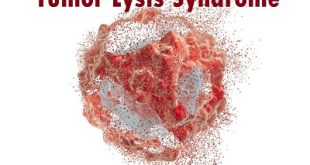Definition
Tinea nigra is a fungal infection that is mainly seen on the palms of the hands or soles of the feet causing a dark brown to black discoloration of the affected skin. The word tinea means a fungal infection and nigra means black. Tinea nigra is overall an uncommon fungal infection when compared to other tinea infections like tinea pedis (feet but usually not the soles), tinea cruris (groin), tinea capitis (scalp) and tinea corporis (body). Most of these other tinea infections are caused by similar species of skin fungi which are commonly found in the environment but tinea nigra is due to rather uncommon fungal species.
Tinea nigra in foot
Tinea nigra is a superficial dermatomycosis meaning that the fungal infection of the skin is limited to the outermost layers. The fairly benign presentation with no itching or skin inflammation means that secondary bacterial infections and permanent scarring are rare. It is more commonly seen in children and is more likely in girls than boys. The conditions also tend to affect lighter skinned individuals than darker skinned people.
Epidemiology
Tinea nigra is not uncommon in tropical regions of Central America, South America, Africa, and Asia. Epidemiologic studies of skin diseases in schoolchildren performed by direct inspection using dermatologists in Magong, Penghu, Republic of China on the island of Formosa found the prevalence of fungal infection, including tinea nigra, tinea versicolor, and tinea corporis, to be 0.24% (95% confidence interval, 0.07-0.41%). It may present as an imported infection from endemic areas into temperate climate regions, including Chile.
Risk factors
A risk factor is something that increases your chance of getting a disease or condition. Individuals more likely to develop it are:
- Children
- Young adults
- Females
- Living or traveling in tropical or subtropical areas, such as:
- South Africa
- Brazil
- Panama
- Cuba
- Puerto Rico
- Coastal areas along the Southeastern seaboard of the United States
Causes
- The fungus, Phaeoannellomyces werneckii, is the most common causative agent of tinea nigra. Phaeoannellomyces werneckii is also known as Exophiala werneckii (former classification), Hortaea werneckii (recent classification), and Cladosporium werneckii.
- This fungus is a geophilic brown mold that dwells in compost, soil, and on wood. Phaeoannellomyces werneckii is usually found in the humid regions of the world, such as tropical and subtropical Africa, Australia, Southeast Asia, and South America. However, this fungi is not restricted exclusively to these places, and can be found worldwide.
- Other causative fungal species include Stenella araguata and Cladophialophora saturnica. These fungal infections usually affect people who sweat a lot (such as those suffering from hyperhidrosis). It also affects people who are frequently in contact with compost and soil, where the causative fungi of tinea nigra reside.
Tinea Nigra Symptoms
The condition is predominantly asymptomatic. In rare conditions, however, it may cause Pruritus – a disorder that is characterized by slight burning or itching. Its occurrence may also be indicated by several other symptoms.
- It is identified by the occurrence of black or brownish spots without scales having sharp borders. The spots might make one feel as if the skin has been stained with silver nitrate.
- Macules may differ in their size, which may range between 1mm and 1.5 cm.
- These occur on the palms. In very rare instances, feet may be involved.
- The macules have an asymmetric, almost always unilateral presentation.
Tinea nigra rash in palm
The condition is not accompanied by Erythema.
Tinea Nigra Rash
The typical tinea nigra rash does not present with the skin redness (erythema) and a very scaly rash associated with fungal infections. Instead it may appear as :
- Round, oval or irregular shaped flat rash.
- Single solitary lesion although multiple lesions can occur.
- Light brown to dark discoloration depending on a person’s natural pigmentation.
- Clearly demarcated borders separating the discoloration from the unaffected skin.
- Slow growing rash that expands over weeks and months.
- Varies in size from a few millimeters to several centimeters over the long term.
- Mainly on the palms or soles but can also be seen on other parts of the skin, especially on the neck and chest.
Diagnosis and test
The typical rash of tinea nigra may be sufficient to make a diagnosis. Additional investigations will assist in confirming the diagnosis and this includes :
- Microscopic examination of skin scrapings on KOH mount.
- Fungal culture.
It is important to verify that the discoloration is due to tinea nigra and not other conditions that may cause clearly demarcated darks patches on the hands. This type of rash may also be seen in melanoma, moles, hyperpigmentation following severe or chronic skin diseases and staining of the hand with dyes.
Treatment and medications
Talk with your doctor about the best treatment plan for you. Scraping the skin with a scalpel blade prior to commencing treatment will help the action of the topical antifungals. This scraping should only be done by a medical professional.
It is usually treated with topical medications that can be applied to the affected area of skin, such as:
- Whitfield’s Ointment
- 2% Miconazole cream
- 2% Ketoconazole cream
- 5-10% Salicylic acid ointment
Prevention of tinea nigra
To help reduce your chance of getting tinea nigra, take the following steps:
- Use care when traveling in areas where tinea nigra may be contracted.
- Avoid contact with potentially infected material, such as rotting wood, dirt, sewage, or compost.
 Diseases Treatments Dictionary This is complete solution to read all diseases treatments Which covers Prevention, Causes, Symptoms, Medical Terms, Drugs, Prescription, Natural Remedies with cures and Treatments. Most of the common diseases were listed in names, split with categories.
Diseases Treatments Dictionary This is complete solution to read all diseases treatments Which covers Prevention, Causes, Symptoms, Medical Terms, Drugs, Prescription, Natural Remedies with cures and Treatments. Most of the common diseases were listed in names, split with categories.








I hear ketoconazole has being fade out due to it having a lot of side effects,then apart from miconazole which other cream can be used?
Butenafine cream can be used as alternative medicine for tinea nigra without any recurrence.
one of my patience hv tinea nigra black I gave him fungral tablet ketoral cream but it didn’t work what should I do
Try other topical medications which is mentioned in post.
Very much useful with images thanks a lot
Tinea nigra , is it contagious .
l have a lady who has used various cream through the consultation with doctor including keto series but still persist . She has done series of test too. It will seize for a while and still re ocured . What can she do now.
Inform to follow some natural remedies.
Can I use nizoral Cream and tab? cause I’ve used the one listed in this page but still persist
It would be better to consult a doctor before having the medicine.
my nails are badly infected what can i do to treat it
Please consult a doctor to get treated for nail infection.
my dad’s feet are itchy what can he use to stop the itching because there are sore like fungus starting to develope
For your dad’s itchy feet with developing sores, he should consult a healthcare professional for an accurate diagnosis. In the meantime, he can try over-the-counter antifungal creams, keep his feet clean and dry, and wear breathable footwear. Changing socks regularly and avoiding sharing personal items can also help. If symptoms persist or worsen, seek prompt medical advice for possible prescription-strength treatments.